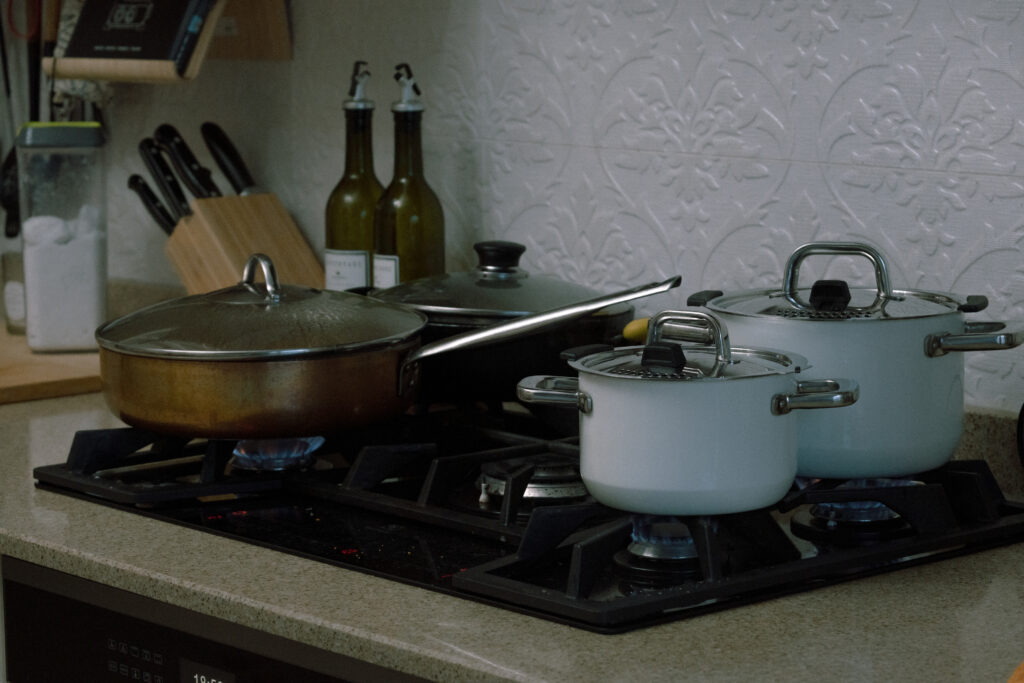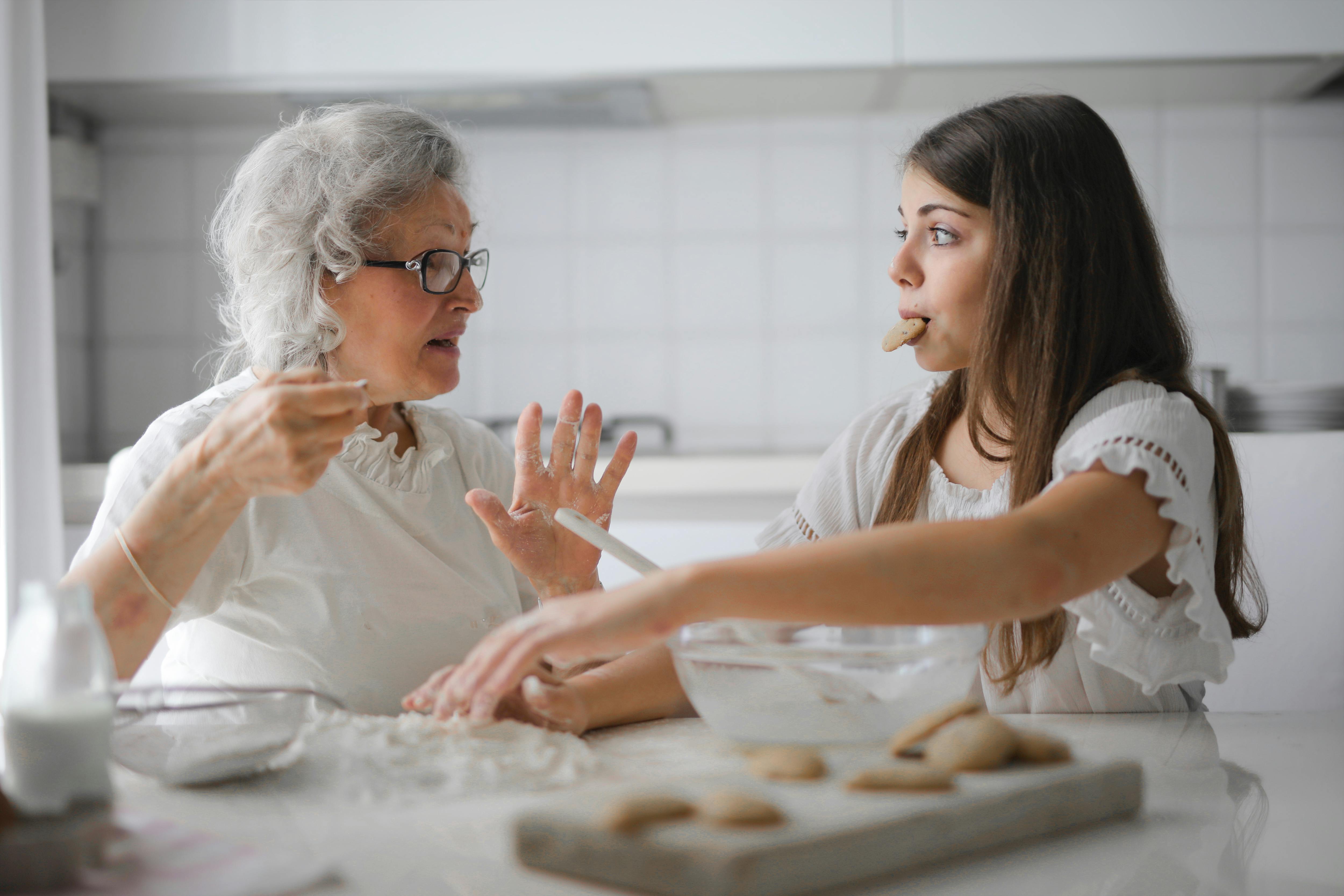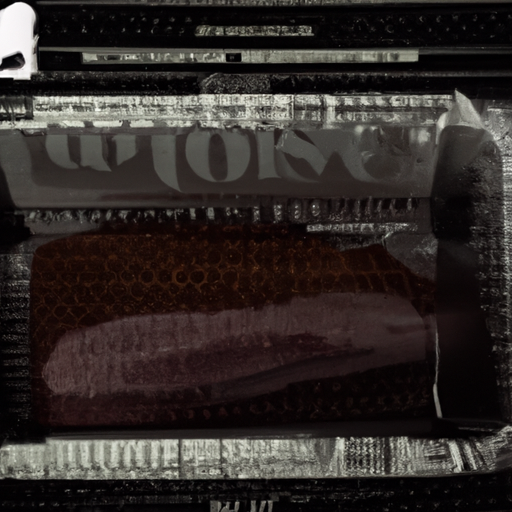Have you ever wondered how professional chefs achieve perfectly cooked, tender, and flavorful dishes every time? Look no further than the world of sous vide cooking. In this article, we will take you on a culinary journey, exploring the art of mastering sous vide cooking, where precision and perfection come together to elevate your culinary creations. From understanding the basics of sous vide to unlocking the secrets of temperature control and time management, we will equip you with the knowledge and techniques to take your cooking skills to new heights. Get ready to discover the wonders of sous vide cooking and unleash your inner kitchen pro.

What is Sous Vide Cooking?
Sous vide cooking is a cooking technique that involves cooking food in a temperature-controlled water bath for an extended period. The term “sous vide” is a French term that translates to “under vacuum,” which refers to the vacuum-sealing process used in this method. By cooking food at a precise and consistent temperature, sous vide cooking ensures even and consistent cooking, resulting in perfectly cooked and flavorful dishes.
Definition of Sous Vide Cooking
Sous vide cooking involves vacuum-sealing food in a bag and immersing it in a water bath with a precise temperature, typically regulated by an immersion circulator. This cooking method allows for precise control over the desired doneness of the food and preserves the natural flavors and textures.
History of Sous Vide Cooking
Sous vide cooking dates back to the early 1970s when it was first introduced by French chef Georges Pralus and later popularized by renowned chef Bruno Goussault. Initially, sous vide cooking was primarily used in commercial kitchens and fine dining establishments, but in recent years, it has gained popularity among home cooks for its ease of use and consistent results.
Benefits of Sous Vide Cooking
Sous vide cooking offers numerous benefits that have made it a favorite cooking technique among both professional chefs and home cooks alike. Firstly, it ensures precise and consistent results, as the temperature-controlled water bath eliminates the risk of overcooking or undercooking. Secondly, sous vide cooking enhances the natural flavors of the ingredients, resulting in tender and juicy dishes. Additionally, this method allows for better retention of nutrients and reduces the risk of food contamination. Finally, sous vide cooking is incredibly versatile, as it can be used for a wide range of ingredients, from meats and fish to vegetables and desserts.
Essential Sous Vide Equipment
To embark on your sous vide cooking journey, it is important to have the necessary equipment that will guarantee optimal results.
Immersion Circulator
An immersion circulator is a crucial piece of equipment for sous vide cooking. It is a device that attaches to the side of a water bath or container and regulates the temperature by circulating and heating the water. The immersion circulator ensures precision and consistency in maintaining the desired temperature throughout the cooking process.
Water Bath or Container
A water bath or container is needed to hold the temperature-controlled water for sous vide cooking. It can be as simple as a large pot or a dedicated sous vide container, which is designed to hold the immersion circulator securely. The container should be heat-resistant, non-reactive, and deep enough to fully submerge the food.
Vacuum Sealer or Ziplock Bags
To achieve the vacuum-sealed environment required for sous vide cooking, you will need a vacuum sealer. A vacuum sealer removes the air from the bags, ensuring that the food is in direct contact with the water and preventing any potential contamination. If you don’t have a vacuum sealer, you can use ziplock bags and the water displacement method to remove the air.
Sous Vide Bags
Specially designed sous vide bags are recommended for optimal results. These bags are made from food-safe materials that can withstand the high temperatures of sous vide cooking without leaching harmful chemicals into the food. They also have a sturdy construction that prevents leaks and ensures a tight seal.
Heat-resistant Clips
Heat-resistant clips are useful for ensuring that the sous vide bags remain submerged in the water bath. These clips can be used to secure the bags to the side of the container, preventing them from floating to the surface and hindering the cooking process.

Choosing the Right Ingredients
When it comes to sous vide cooking, selecting high-quality ingredients is key to achieving delicious and flavorful results.
Quality of Ingredients
Since sous vide cooking preserves the natural flavors and textures of the ingredients, it is important to choose ingredients of the highest quality. Opt for fresh and seasonal produce, as well as meats and fish that are responsibly sourced and free from any defects or blemishes. Quality ingredients will not only enhance the taste of your dishes but also ensure food safety.
Seasoning and Marinating
While sous vide cooking can produce delicious results with minimal seasoning, adding herbs, spices, and marinades can elevate the flavors even further. Since the vacuum-sealed environment intensifies the taste, it is recommended to use less seasoning than you would in traditional cooking methods. Experiment with different combinations of herbs, spices, and liquids to find your preferred flavor profiles.
Safety Precautions
As with any cooking method, it is essential to maintain proper food safety practices when using sous vide cooking. Ensure that all ingredients are properly cleaned and stored before vacuum-sealing them. It is also important to follow recommended cooking temperatures and times to prevent the growth of harmful bacteria. Properly handle and store the cooked food to avoid any cross-contamination or spoilage.
Setting Up Sous Vide Cooking
To achieve the desired results with sous vide cooking, proper setup is crucial.
Temperature Control
One of the key advantages of sous vide cooking is accurate temperature control. Set the desired temperature according to the type of food being cooked and the level of doneness desired. The immersion circulator will maintain the water bath at a consistent temperature to ensure even cooking.
Water Circulation
The immersion circulator helps to circulate the water in the container, maintaining a consistent temperature throughout. Make sure to position the immersion circulator properly, keeping it away from the edge of the container to promote better water circulation.
Time and Duration
The cooking time for sous vide dishes varies depending on the type of food and desired level of doneness. It is important to consult recipes and guidelines for specific times and temperatures. Sous vide cooking generally requires longer cooking times compared to traditional methods, but the extended cook time allows for maximum tenderness and flavor infusion.

Preparing Your Food for Sous Vide
Properly preparing your food before cooking is essential to achieve the best results with sous vide cooking.
Trimming and Portioning
Before vacuum-sealing the ingredients, ensure they are properly trimmed and portioned. Remove any excess fat, gristle, or bones to create evenly sized portions that will cook uniformly. This step not only enhances the appearance of the dish but also ensures that it cooks evenly during the sous vide process.
Seasoning and Flavoring
Season the food with your preferred herbs, spices, and marinades before vacuum-sealing. The vacuum-sealed environment intensifies the flavors, so it is recommended to use less seasoning than you would in traditional cooking methods. Ensure that the seasoning is evenly distributed to enhance the taste of every bite.
Vacuum Sealing or Air Removal
For optimal results in sous vide cooking, it is important to remove as much air as possible from the bags. If using a vacuum sealer, carefully seal the bags, ensuring a tight and secure seal. If using ziplock bags, partially seal the bag and slowly submerge it in water, allowing the pressure to push the air out. Once the air is removed, finish sealing the bag completely.
Cooking Techniques and Tips
To achieve perfection in your sous vide cooking, here are some techniques and tips to keep in mind.
Preheating the Water Bath
Before adding the food, preheat the water bath to the desired cooking temperature. This ensures that the food cooks evenly from the start and helps maintain the precise temperature throughout the cooking process.
Ensuring Proper Water Level
Maintaining the proper water level is important to prevent any disruptions in the cooking process. The water should be high enough to fully submerge the food and allow proper water circulation. Add extra water if necessary to ensure consistency in temperature.
Avoiding Cross-Contamination
To prevent cross-contamination, ensure that different types of ingredients, especially raw meats and fish, are sealed in separate bags. Be mindful of any potential leaks or drips that could contaminate other foods while in the water bath. Properly clean and sanitize any surfaces or utensils that come into contact with raw ingredients.
Adding Aromatics and Flavors
To infuse additional flavors into your sous vide dishes, consider adding aromatics such as herbs, spices, and citrus zest to the vacuum-sealed bags. These ingredients contribute to the overall taste and aroma of the dish without altering the cooking process.
Using Sous Vide for Different Cuts of Meat
Sous vide cooking works exceptionally well with various cuts of meat, including tougher cuts that benefit from longer cooking times. The low and slow cooking method tenderizes the meat while retaining moisture and natural flavors. Experiment with different cuts to discover new and exciting flavor profiles.
Finishing Techniques (Searing, Grilling, etc.)
While sous vide cooking ensures perfectly cooked and tender food, additional finishing techniques can be employed to enhance the appearance and texture. After removing the food from the water bath, sear it in a hot pan or grill to create a caramelized and flavorful crust. This step adds a delightful contrast of textures to the sous vide dish.
Safety and Hygiene Measures
To ensure the safety and hygiene of your sous vide cooking, follow these essential measures.
Safe Handling of Sous Vide Bags
When handling sous vide bags, always ensure they are in good condition and free from any leaks or signs of contamination. If there are any leaks or compromised seals, discard the bag and its contents. Use caution when opening hot bags to avoid steam burns, and always handle the bags with clean hands or utensils.
Preventing Bacterial Growth
To prevent the growth of harmful bacteria, it is essential to cook food at the recommended temperatures and times. Sous vide cooking allows for pasteurization and cooking at lower temperatures, but it is crucial to follow guidelines to ensure food safety. Avoid leaving cooked food at room temperature for extended periods and promptly refrigerate or freeze leftovers.
Proper Cleaning and Maintenance of Equipment
Maintain the cleanliness of your sous vide equipment by regularly cleaning and sanitizing the immersion circulator, water bath or container, and any utensils used. Pay attention to any residue or buildup that could affect the quality and safety of your sous vide cooking. Follow manufacturer recommendations for proper maintenance and storage of your equipment.
Troubleshooting Common Issues
While sous vide cooking generally yields consistent results, here are some common issues that may arise and how to troubleshoot them.
Overcooking or Undercooking
Achieving the desired level of doneness is crucial in sous vide cooking. If your food is overcooked, consider reducing the cooking time or lowering the temperature slightly. On the other hand, if it is undercooked, increase the cooking time or raise the temperature accordingly. Keep notes and adjust the cooking parameters for future reference.
Sealing and Leakage Problems
Properly sealed bags are essential to maintain the vacuum-sealed environment in sous vide cooking. If you experience sealing or leakage problems, ensure that the bags are properly sealed and the seal is free from any obstructions. Switch to a different brand of bags if needed, and always double-check for any potential leaks before submerging them in the water bath.
Uneven Cooking
To ensure even cooking, it is important to properly portion and trim the ingredients before cooking. If you notice uneven cooking, check for any air bubbles that may hinder direct contact with the water. Rearrange the bags during cooking if necessary to allow for better water circulation. Placing heat-resistant clips strategically can help keep the bags properly submerged.
Creative Sous Vide Recipes
Sous vide cooking opens up a world of culinary possibilities. Here are some creative recipes to inspire your sous vide adventures.
Sous Vide Steak
Sous vide cooking produces incredibly tender and juicy steaks. Start by seasoning the steak with your preferred seasonings, vacuum-seal it, and cook it in the water bath at the desired temperature for the desired level of doneness. Finish it off with a quick sear in a hot pan or on a grill for that perfect crust.
Sous Vide Salmon
Sous vide salmon is a surefire way to achieve perfectly cooked, melt-in-your-mouth fish. Season the salmon fillets with herbs, lemon zest, and a touch of olive oil. Vacuum-seal the fillets and cook them in the water bath at the recommended temperature and cooking time. Serve the salmon with a refreshing citrus salad for a light and flavorful meal.
Sous Vide Vegetables
Sous vide cooking breathes new life into vegetables, intensifying their natural flavors and retaining their vibrant colors. Season your favorite vegetables with herbs, spices, and a drizzle of olive oil. Vacuum-seal the vegetables and cook them in the water bath until they reach the desired tenderness. Finish them off with a quick sauté or grill for added texture.
Sous Vide Desserts
Sous vide cooking can also be used to create delectable desserts. For a creamy and indulgent dessert, try making sous vide crème brûlée. Combine cream, sugar, and vanilla in a vacuum-sealed bag and cook it in the water bath until set. Once chilled, sprinkle with sugar and torch the top for that irresistible caramelized crust.
Sous Vide Infusions
Sous vide infusions allow you to infuse liquids with flavors at controlled temperatures. You can create infused oils, syrups, or even infuse spirits like vodka or rum with fruits or herbs. Vacuum-seal the ingredients and place them in the water bath at the desired temperature and duration to extract the flavors fully.
Tips for Sous Vide Success
To elevate your sous vide cooking and achieve consistent results, here are some tips to keep in mind.
Experimenting with Temperature and Time
Sous vide cooking provides the opportunity to experiment with different temperatures and cooking times to achieve your preferred level of doneness. Keep notes on your experiments to create a reference guide for future sous vide cooking.
Taking Notes and Adjusting Recipes
Note down any adjustments or modifications you make to recipes during the cooking process. Making adjustments to cooking times or temperatures can help you fine-tune your sous vide recipes to suit your preferences.
Using Sous Vide for Meal Planning
Sous vide cooking is an excellent technique for meal planning, as it allows you to cook and portion meals in advance. Cook larger quantities of protein and vegetables, and store them in the refrigerator or freezer. When ready to eat, simply reheat the sous vide dishes for a quick and convenient meal.
Mastering the art of sous vide cooking takes time and practice, but with the help of this comprehensive guide, you’ll be able to achieve precision and perfection in your dishes. Whether you’re a seasoned chef or an adventurous home cook, sous vide cooking offers endless culinary possibilities and the ability to create unforgettable meals with ease. So dive into the world of sous vide and enjoy the delicious flavors and textures that this technique has to offer. Happy cooking!

